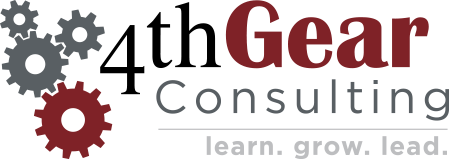A lot of the work that I do with businesses revolves around helping them manage change. If a business plans to be successful for longer than a month or two, change will be necessary at some point. One of the first things I do is help them stop thinking about managing change and start thinking about leading it. Managing sounds like it’s just about sending out a memo, changing a few processes and completing some tasks. A business can do all of that well and fail miserably at making any change happen.
Leading change implies that there is much more to it and that it relates more to the people in the company than the activities. If the people don’t change, the company won’t either. Once business leaders have the right outlook on what it takes to lead change, there is still a lot of work to be done, but the outcome is more likely to be the one they want. Here are 3 things that many businesses overlook as they work to build a business that adapts to the needs of tomorrow.
1. Change is personal, not just professional
We often think about change as something that is mechanical or methodical just because the change we are leading happens to be in an organization. The truth is that for change to be successful, many if not all of the people in your organization have to change their own individual behaviors. That’s not easy, but it can be done with the right focus on culture, coaching and the individual goals of the employees. Yet we won’t go anywhere near those things if we think we can just put a new process in place and have people do something different tomorrow than they did today. The moment we believe that’s possible, we’ve already failed at leading change.
2. Change takes time; set your expectations accordingly
Most businesses experience a burst of momentum as they begin to implement change. Everyone gets excited about a new direction and new opportunities, especially at the top of the company. Then, when the hard stuff hits, like change resistance, leaders get frustrated and resort to strong-arm tactics. They say things like “this train is leaving whether you’re on it or not”. Then they wonder why they actually slow the change rather than speed it up. Set your expectations so that there’s reasonable time to communicate, coach, and support. It’s true that violence is the quickest way to change behavior, but it’s not sustainable. You will get a brief shift in behavior and call it a win. Yet, shortly following that, everyone will return to yesterday’s behaviors and then resist change even more.
3. Leaders have to go first
I was working with a leader recently who said, “ I knew the change would be hard for others but I didn’t know that it would be this hard for me”. She was articulating the challenge many leaders face. If you expect others to change their behavior but you aren’t willing to change yours first, don’t count on much change happening. When we refuse to change how we operate when leading and supporting a change we have asked others to engage in, we give them permission not to change their actions either. Changing how we work is one of the biggest ways we actually cause change. If we don’t go first, there’s nothing to follow.
Most companies do a great job of crafting the communications, putting the posters up, sending out the memos and issuing the instructions. What they forget is that change is a much more individual job and we have to engage our people in ways that help them lead the change, too. Just pointing to a new destination won’t necessarily make people want to go there, even if you do sign the paycheck. We may wish that were different but we are better off learning how to lead change the right way, rather than hoping human behavior suddenly becomes a simple equation. The good news is that most organizations, including your competitors, are terrible at leading change. Learn how to do it well and you have a competitive advantage second to none.
Leading Through Influence
We develop better leaders so they can build a better future. Contact Us to learn about leader development via our training, workshops and executive coaching.


